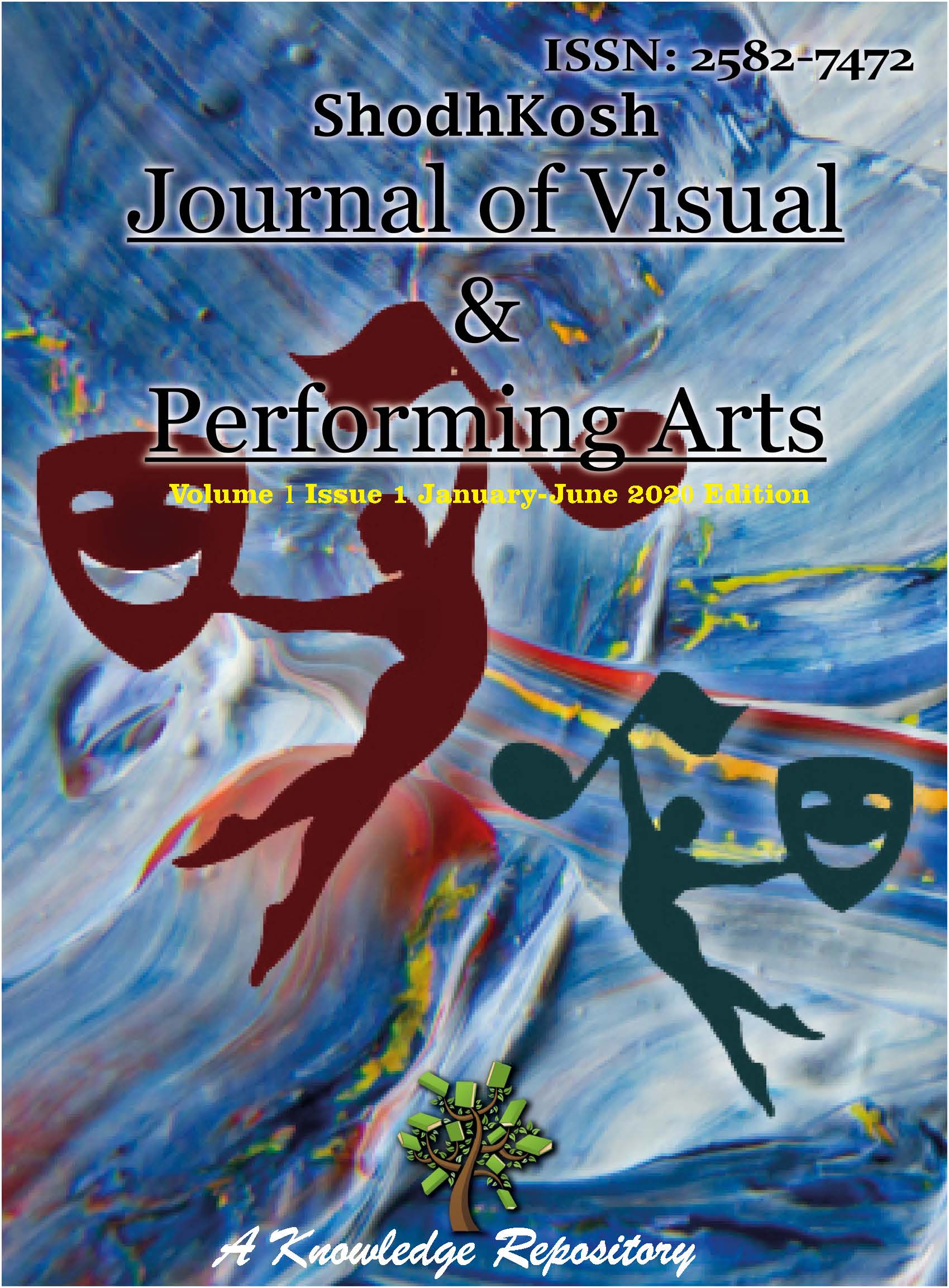AGRICULTURE AND SOCIETY FROM THE VEDIC PERIOD TO THE GUPTA PERIOD
DOI:
https://doi.org/10.29121/shodhkosh.v1.i1.2020.5847Keywords:
Ancient Indian Agriculture, Vedic Period, Land Ownership, Agricultural Society, Irrigation Systems, Caste System, Rural Economy, Mauryan Administration, Kautilya ArthashastraAbstract [English]
This paper examines the evolution of agriculture and society in ancient India from the Vedic period to the Gupta period, tracing the transformation of land ownership patterns, agricultural practices, and social structures. The study analyzes how the Indian economy, fundamentally based on land from ancient times, developed from a primarily rural agrarian society to more complex agricultural and commercial systems. The research explores the transition from collective to individual land ownership, beginning with evidence from Rigvedic literature that suggests individual farming families owned agricultural land, animals, and gold as personal property. The paper traces agricultural development through various periods including the later Vedic era, post-Vedic Buddhist period, Maurya-Sunga period, and post-Mauryan times, examining how land classification systems, irrigation methods, crop cultivation, and animal husbandry evolved. Key findings include the establishment of various land types (cultivated, barren, pasture, and forest land), the development of artificial irrigation systems, and the emergence of complex taxation and land grant systems. The study demonstrates how agricultural practices influenced social stratification, with Brahmins gaining prominence through their role in agricultural rituals, and how hereditary occupations eventually crystallized into the caste system. The paper also examines the role of state administration in agricultural development, particularly during the Mauryan period under Kautilya's economic framework, and analyzes different categories of landowners including farmers, sharecroppers, and landless laborers.
References
Ghurye, Vedic India.
Rigveda 10.34: "Axair ma divyaḥ kriṣim iti kṛṣasva."
Rigveda: "How many cows did he marry there?"
Rigveda 10.78.6.
Jaimal Rai, Rural Urban Economy and Social Change in Ancient India, p. 14.
G.S.P. Mishra, Ancient Indian Society and Economy, p. 76.
Rigveda 1.112.20, 1.33.15, 10.32.7, 4.38.1, 7.19.3, 9.85.4.
Rigveda 4.57.1-3, 7.35.10, 10.66.13 (referring to the god Kshetrapati; Vastupati in Rigveda 8.21.3; Ashwapate, Go Pate Urvarapate).
Rigveda 4.41.6, 6.25.4.
Lallanji Gopal, Aspects of the History of Agriculture in Ancient India, p. 43.
G.C. Pandey, Dimensions of Ancient Indian Social History, p. 74.
G.C. Pandey, History of the Punjab, Volume 13. Schrader, Prehistoric Antiquities, p. 289.
Macdonell and Keay, Vedic Index. See Vadhopadhyaya, Economic Life and Progress in Ashvent India. Lallanji Gopal, History of Agriculture in Ashvent India, p. 43.
Rigveda 10.142.3, 6.47.20, 7.61.14.
Ibid, 7.49.2.
Rigveda 10.101.5-7: "The well is said to be incarnate 'Ishtathadhave avatama suvartram.'"
Vedic Index, Volume 1, p. 40.
Kaveda 7.49.2; Ibid 4.85.5; Ibid 7.69.12.
Rigveda 10.131.2; Dantyanupurva Viyuha and Rigveda.
Rigveda 10.48.7.
Vedic Index 1.182.
Rigveda 1.28.9, 9.66.28.
Jaimal Rai, The Current Urban Economy and Social Changes in Ancient India, p. 319.
Shatapatha Brahmana 13.8.1-5.
Aitareya Brahmana 8.21.8.
G.S.P. Mishra, Ancient Indian Society and Economy, p. 95.
Vajasaneyi Samhita 18.22.
Jataka 10.281; Dighanikaya 11.18.
Panini 4.4.97.
Ibid, 5.2.107.
Ibid, 5.3.119.
Ibid, 3.3.189.
Ibid, 5.2.18.
Paachitiya, p. 53; G.S.P. Mishra, The Age of Vinaya, pp. 243-244; and Ancient Indian Society and Economy, p. 186.
Panini Ashtadhyayi 5.22.
Chullavagga, p. 292.
Dictionary published by the Pali Text Society under "Bali" and "Bhaga."
Panini Ashtadhyayi 3.22.2.
Panini Ashtadhyayi 10.24.
U.N. Ghoshal, Hindu Revenue System, pp. 3-4.
Vajasaneyi Samhita a.30; Taittiriya Brahmana 3.4.
Prananath, A Study in the Economic Conditions of Ancient India.
R.P. Kangle, Kautilya Arthashastra: A Study, p. 168.
Arthshastra 11.1.1-17. DOI: https://doi.org/10.17010/aijer/2012/v1i1-2/54511
Ibid, 11.1.8-18.
D.C. Sarkar, Landlordism and Tenancy in Ancient and Medieval India Revealed by Epigraphical Records, p. 4.
Jaimal Rai, Rural Urban Economy and Social Changes in Ancient India, pp. 48-49.
Lallanji Gopal, Aspects of the History of Agriculture in Ancient India, p. 72; K.T. Shah, Ashvent Foundation of Economics in India; and A.N. Bose, Social and Rural Economy.
Arthashastra 1.14.3.
Kangte, The Kautilya Arthashastra, Part 3, p. 172.
Manu 3.237, The Laws of Manu, Sacred Books of the East, p. 296.
Manu 3.29-30.
Manu 3.243.
Manu 11.128-129.
Jaimal Rai, Rural Urban Economy and Social Changes in Ancient India, p. 62.
Yajnavalkya.
Manu 9.49.
Ibid, 4.4.91.
Ibid, 3.3.119.
Ibid, 4.2.107.
Prabhudayal Agnihotri, India during the Period of Patanjali.
Manu 3.3.125.
Downloads
Published
How to Cite
Issue
Section
License
Copyright (c) 2020 Dr. Kamlesh Kumar Tewari

This work is licensed under a Creative Commons Attribution 4.0 International License.
With the licence CC-BY, authors retain the copyright, allowing anyone to download, reuse, re-print, modify, distribute, and/or copy their contribution. The work must be properly attributed to its author.
It is not necessary to ask for further permission from the author or journal board.
This journal provides immediate open access to its content on the principle that making research freely available to the public supports a greater global exchange of knowledge.




























